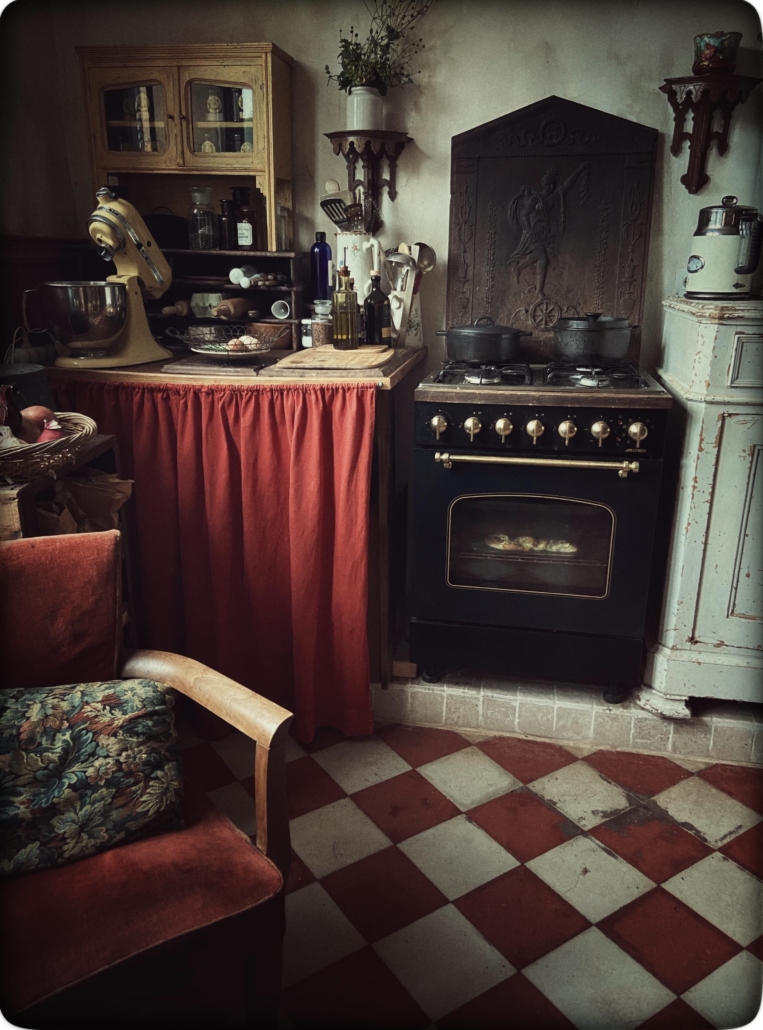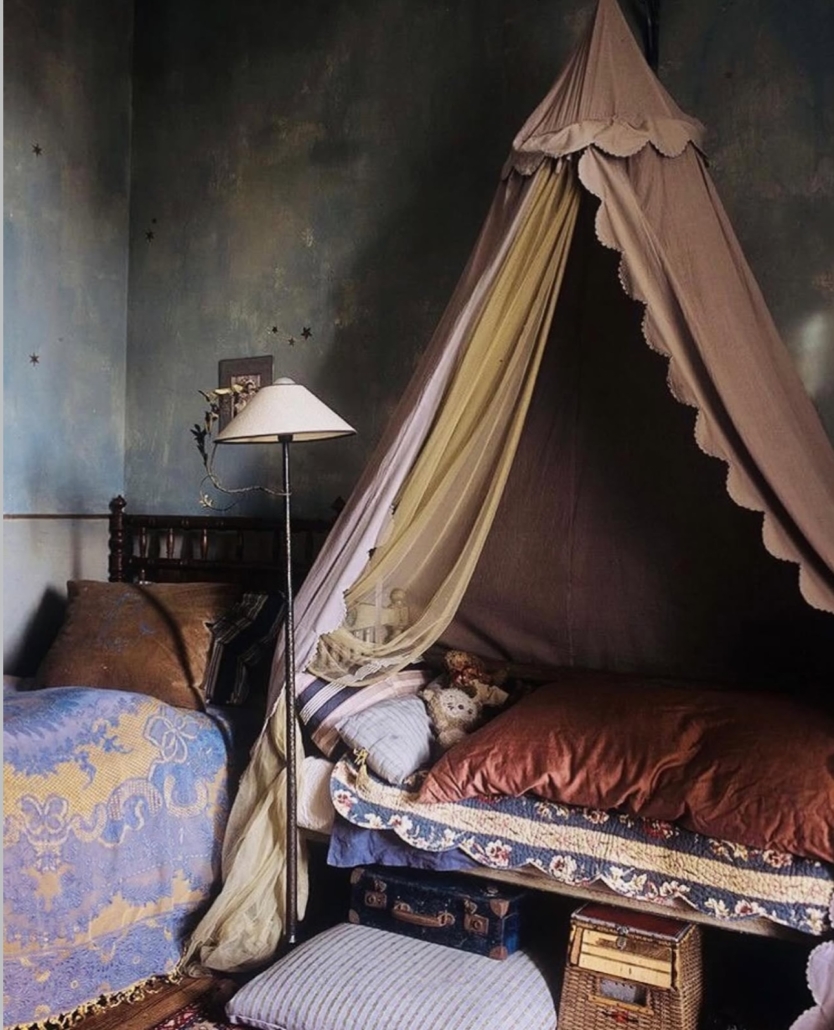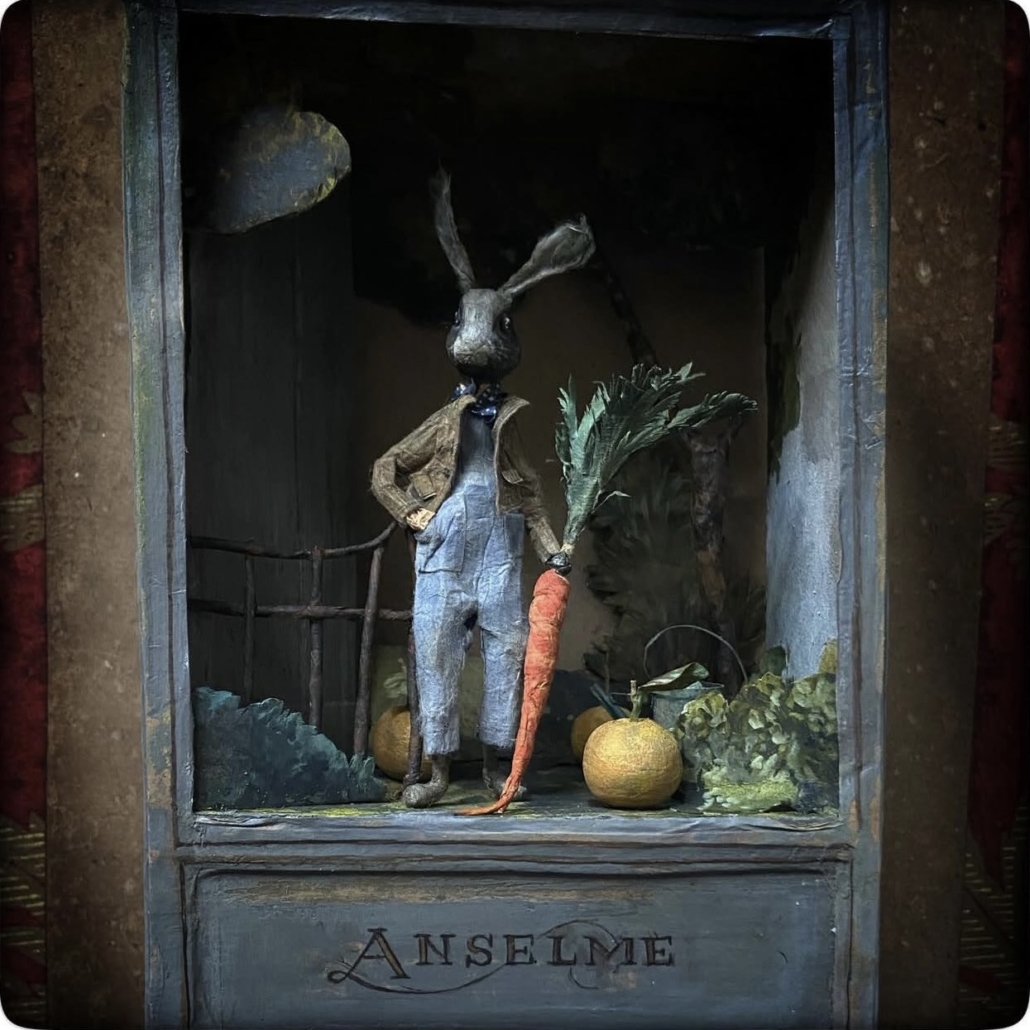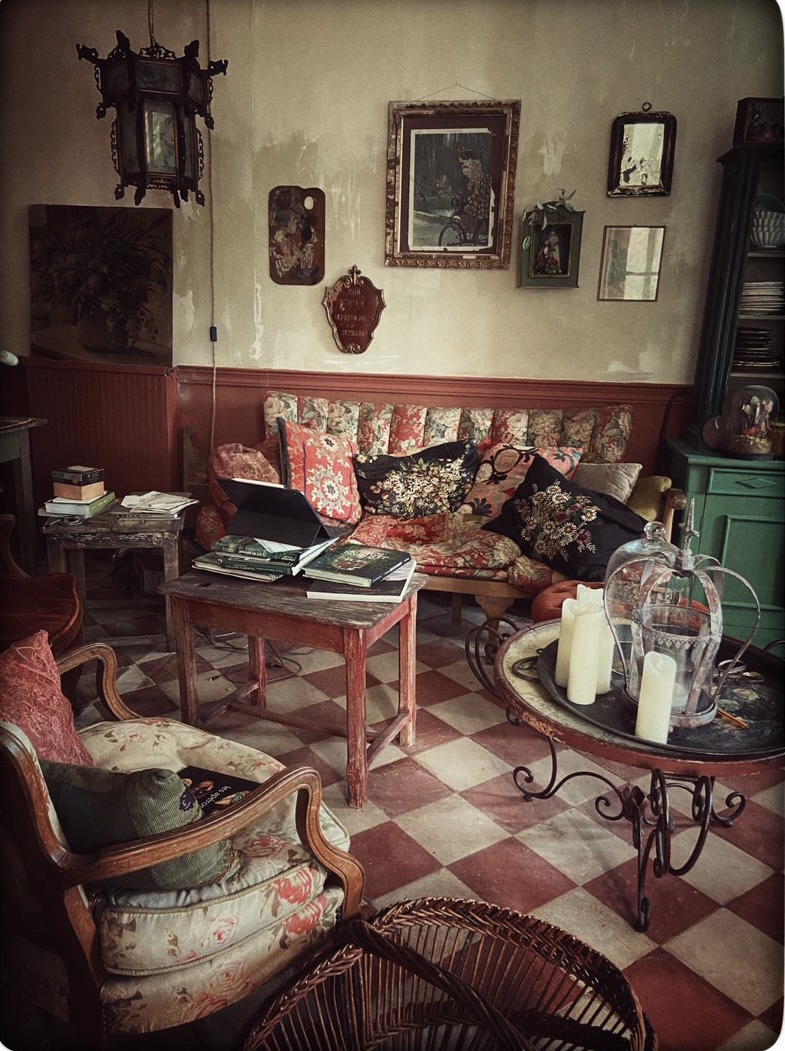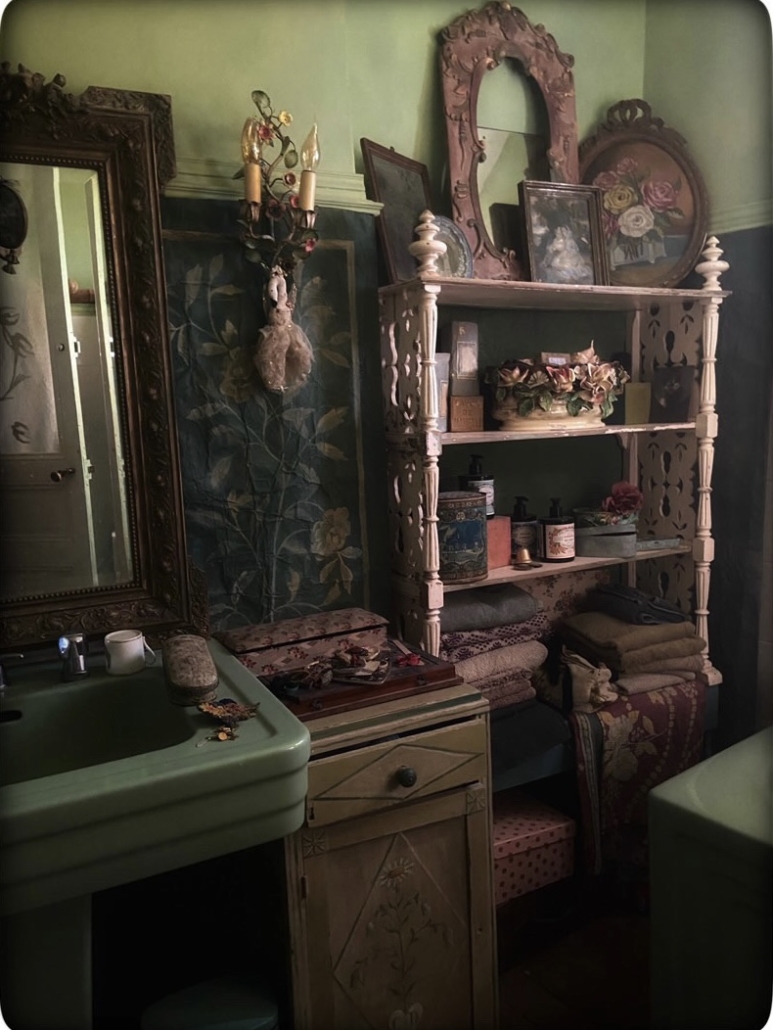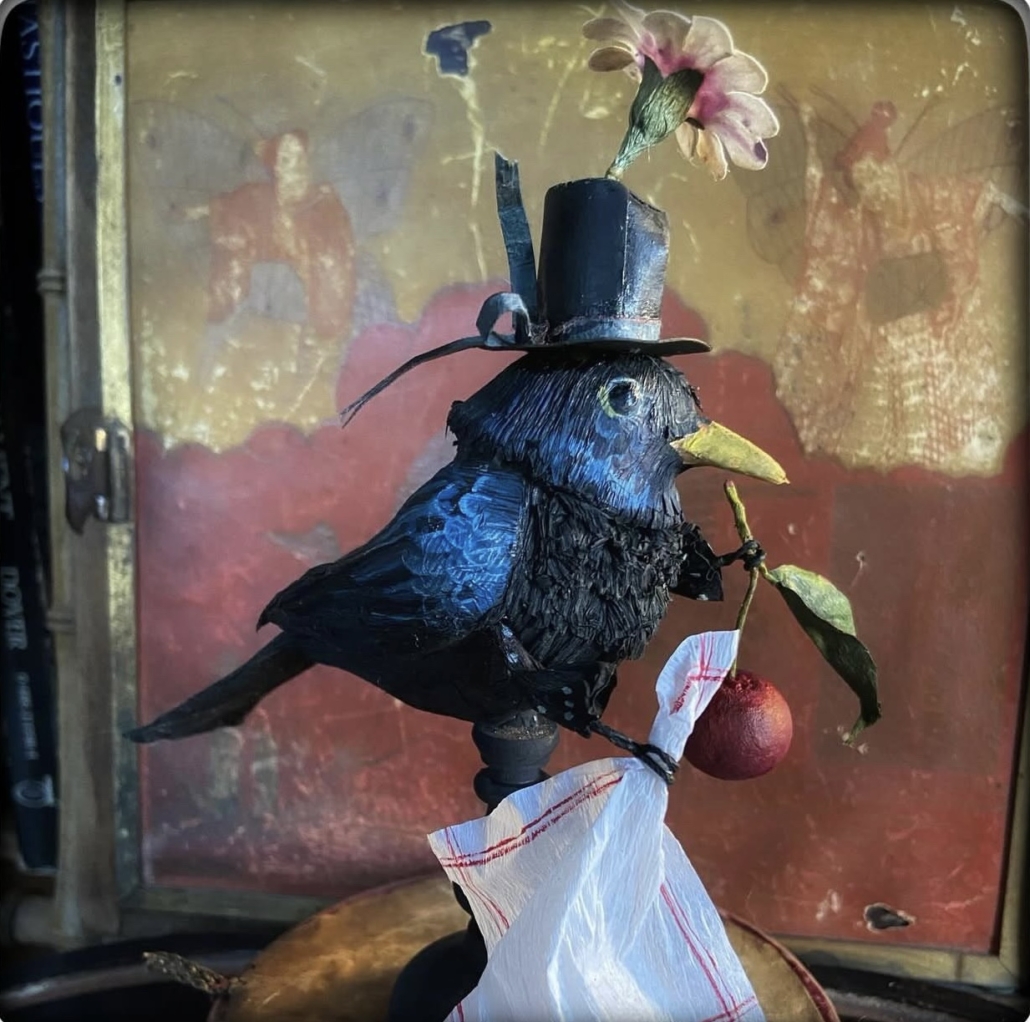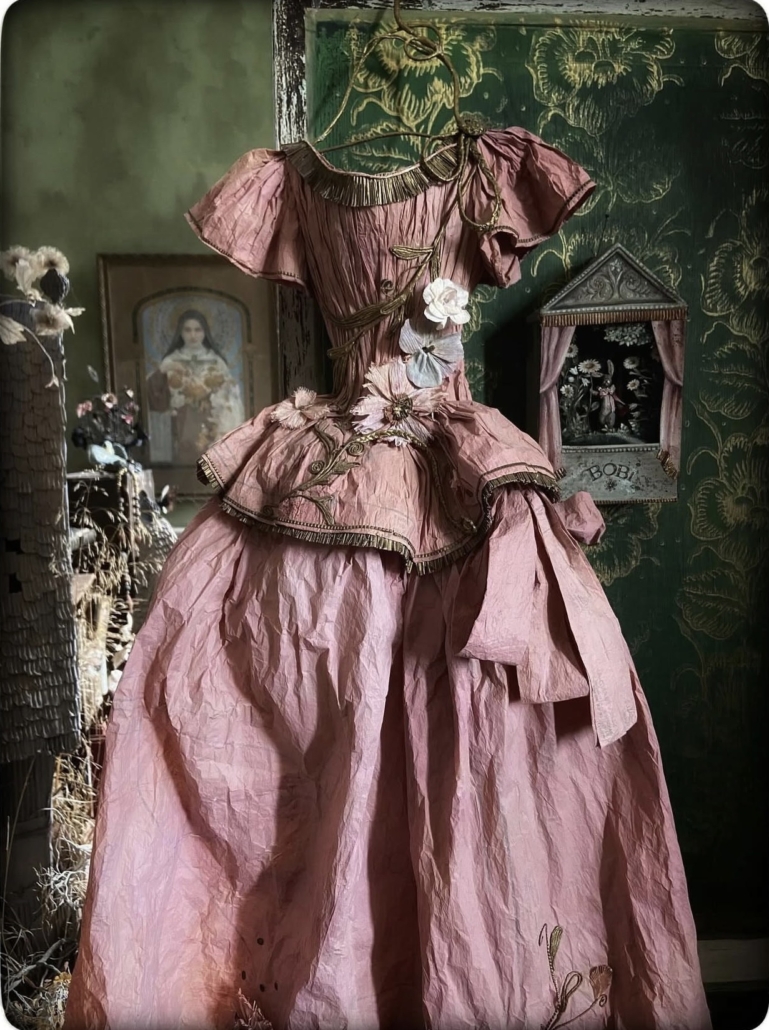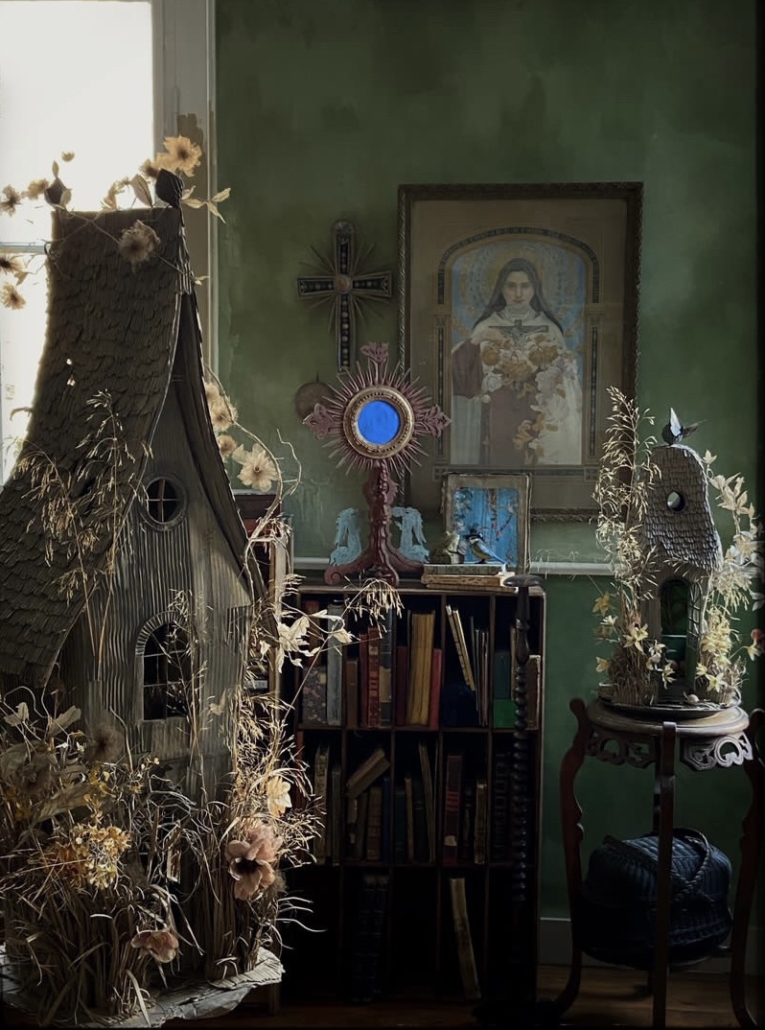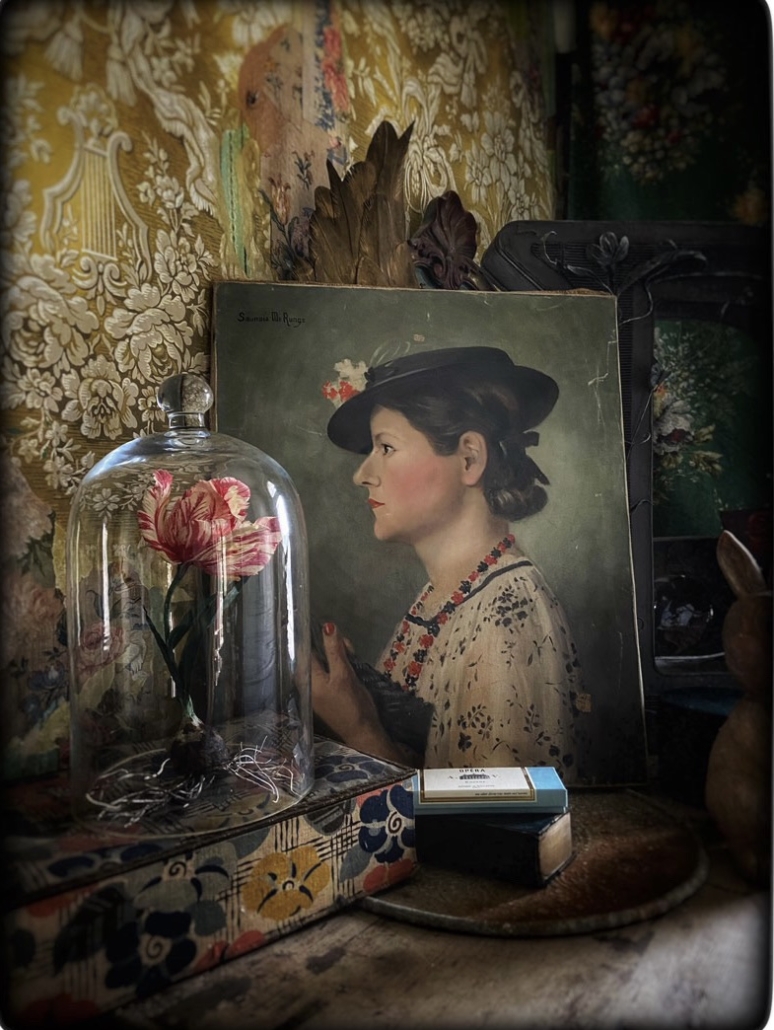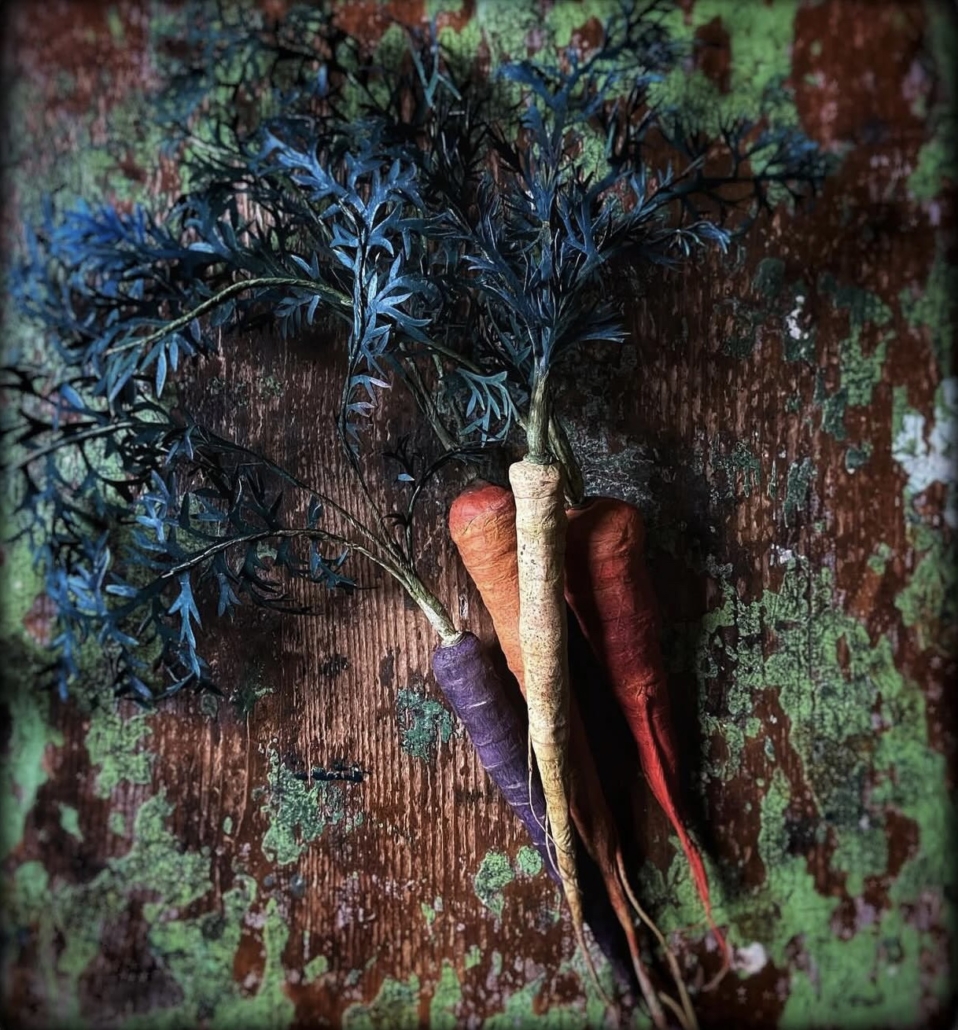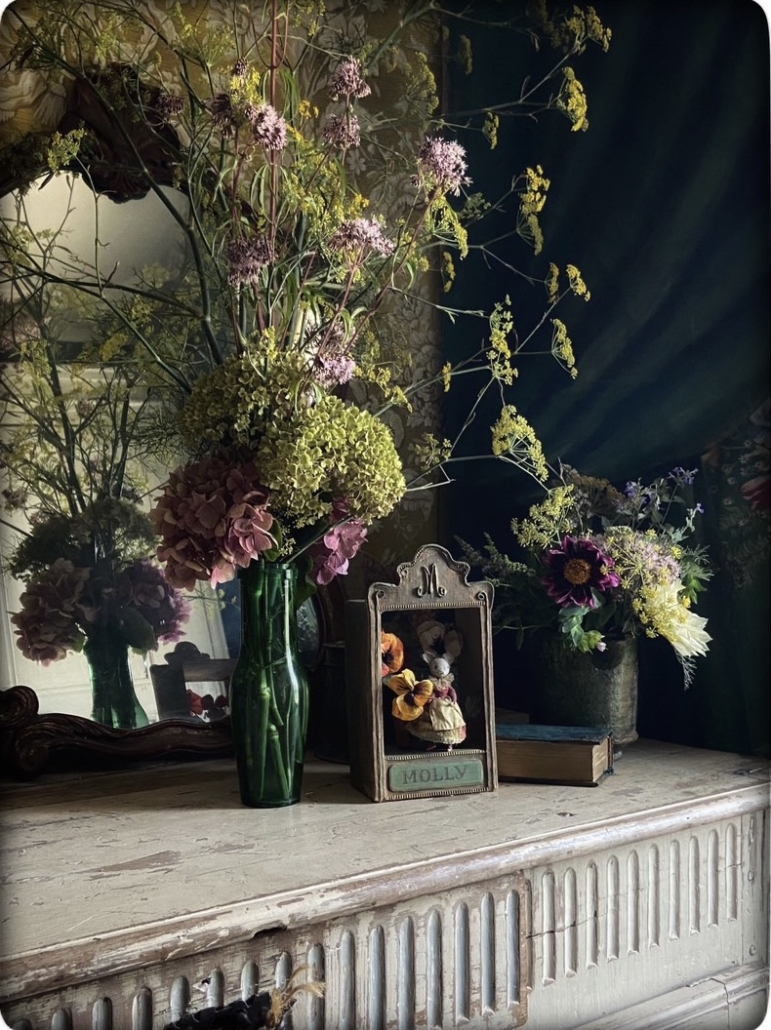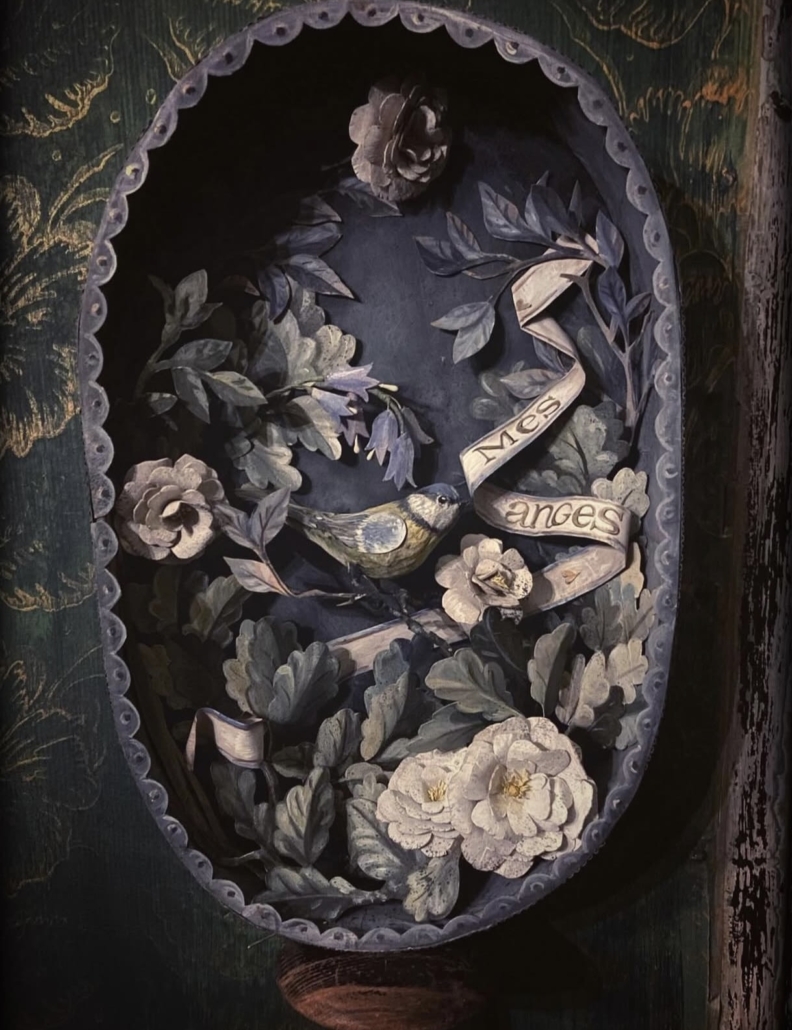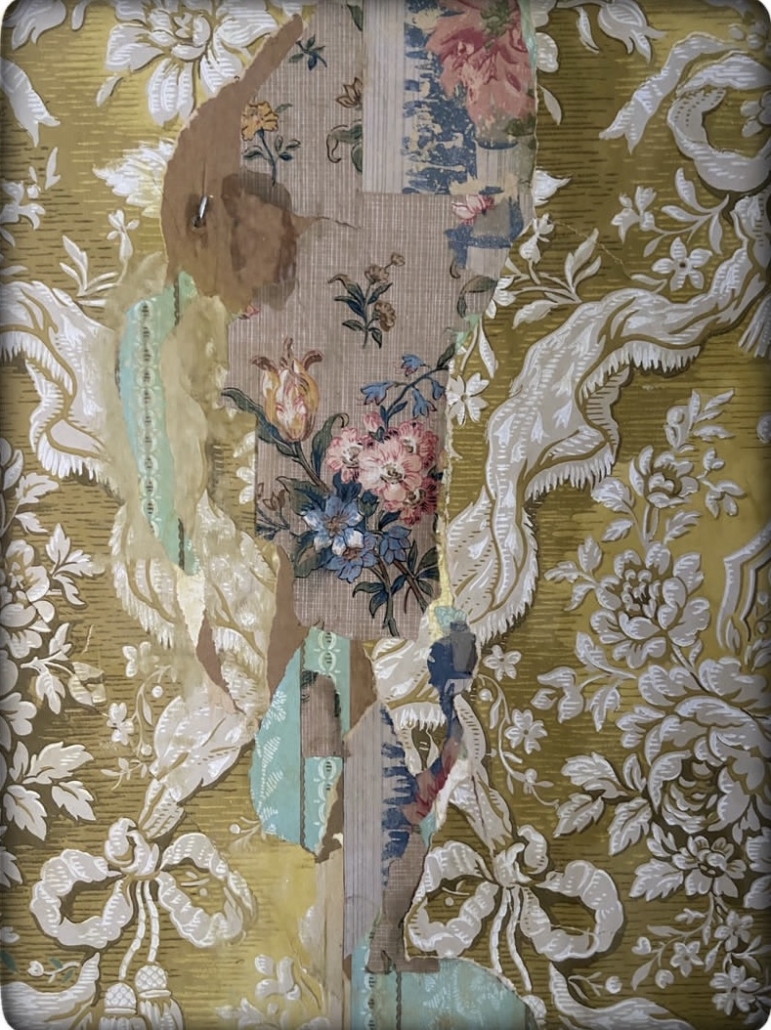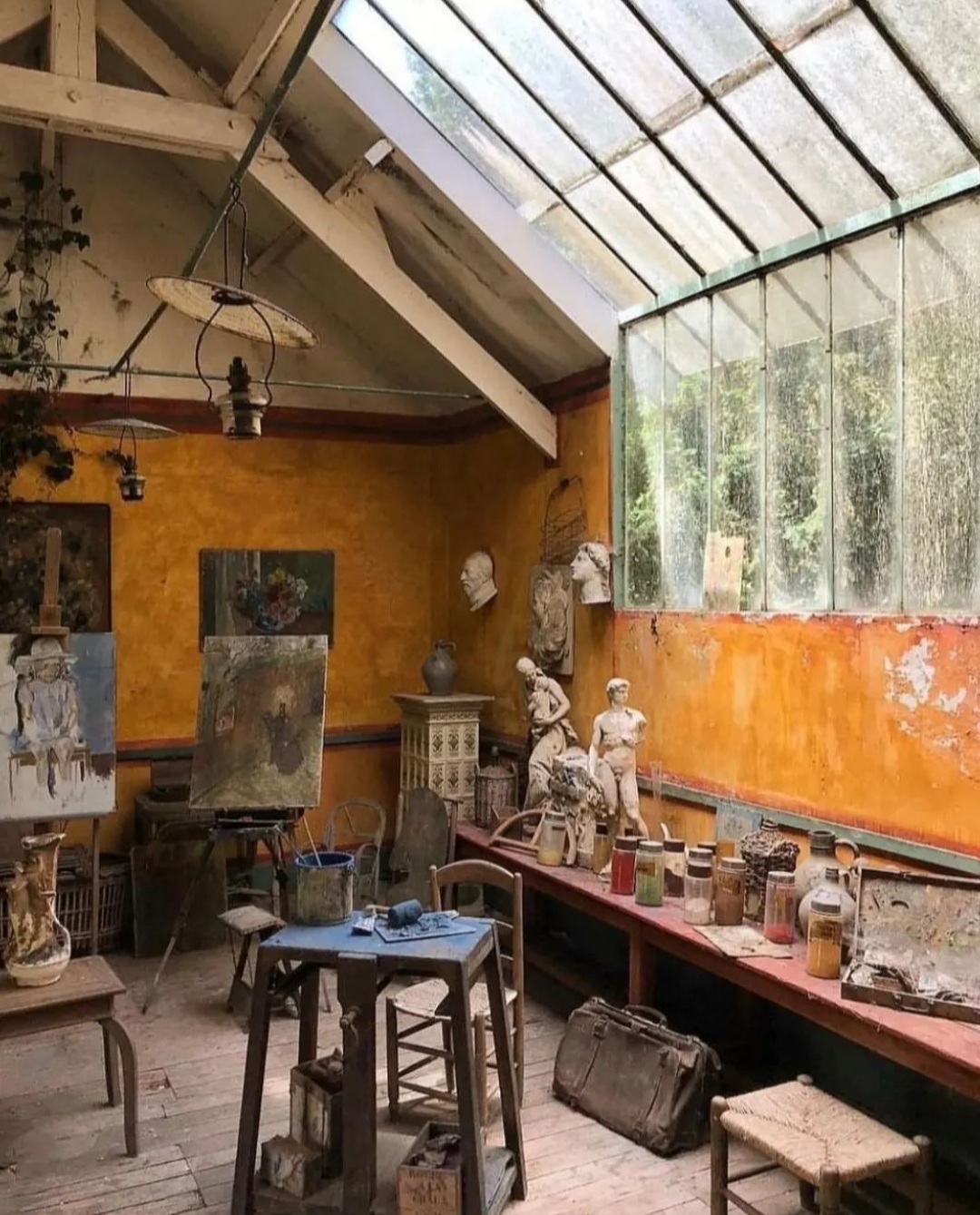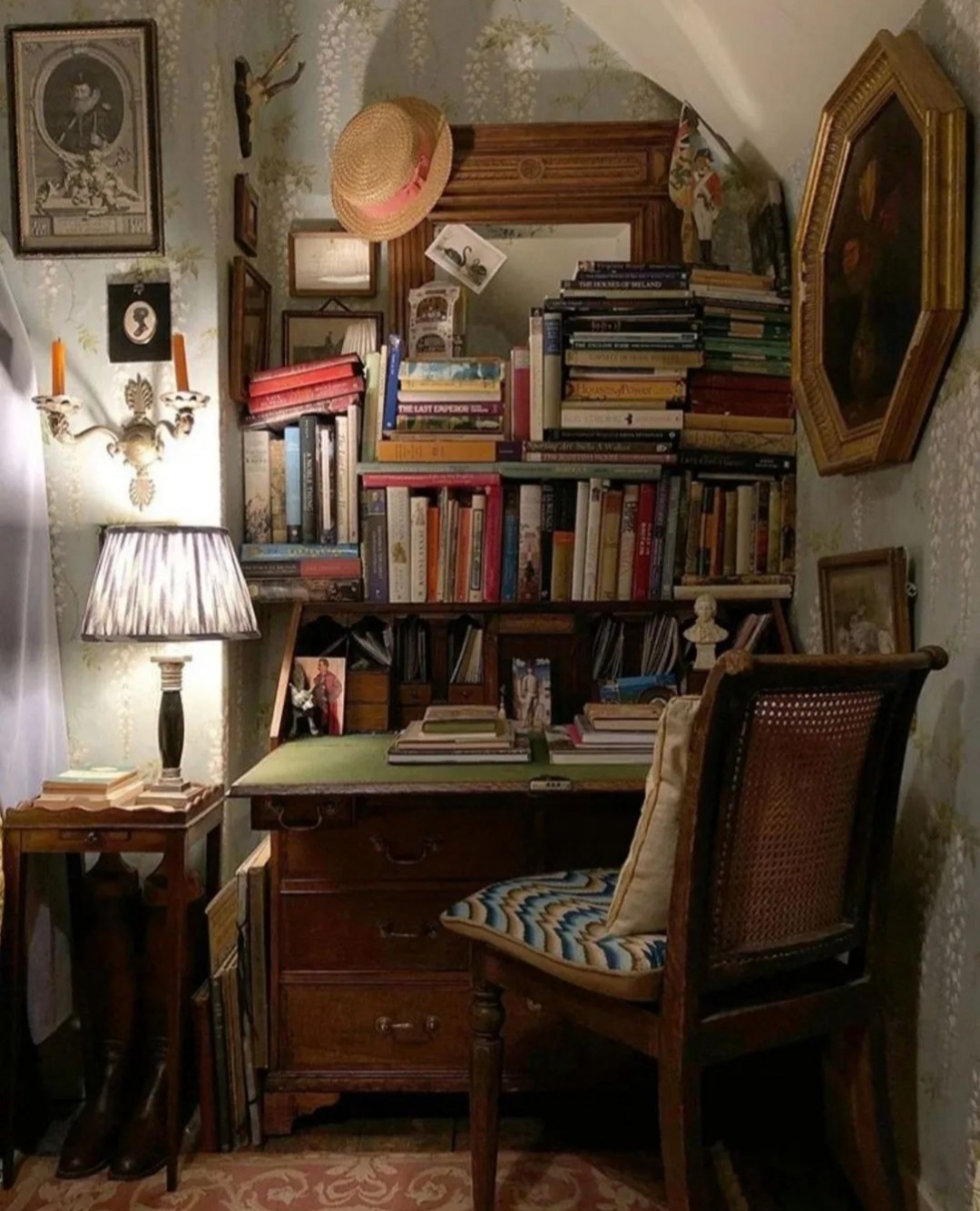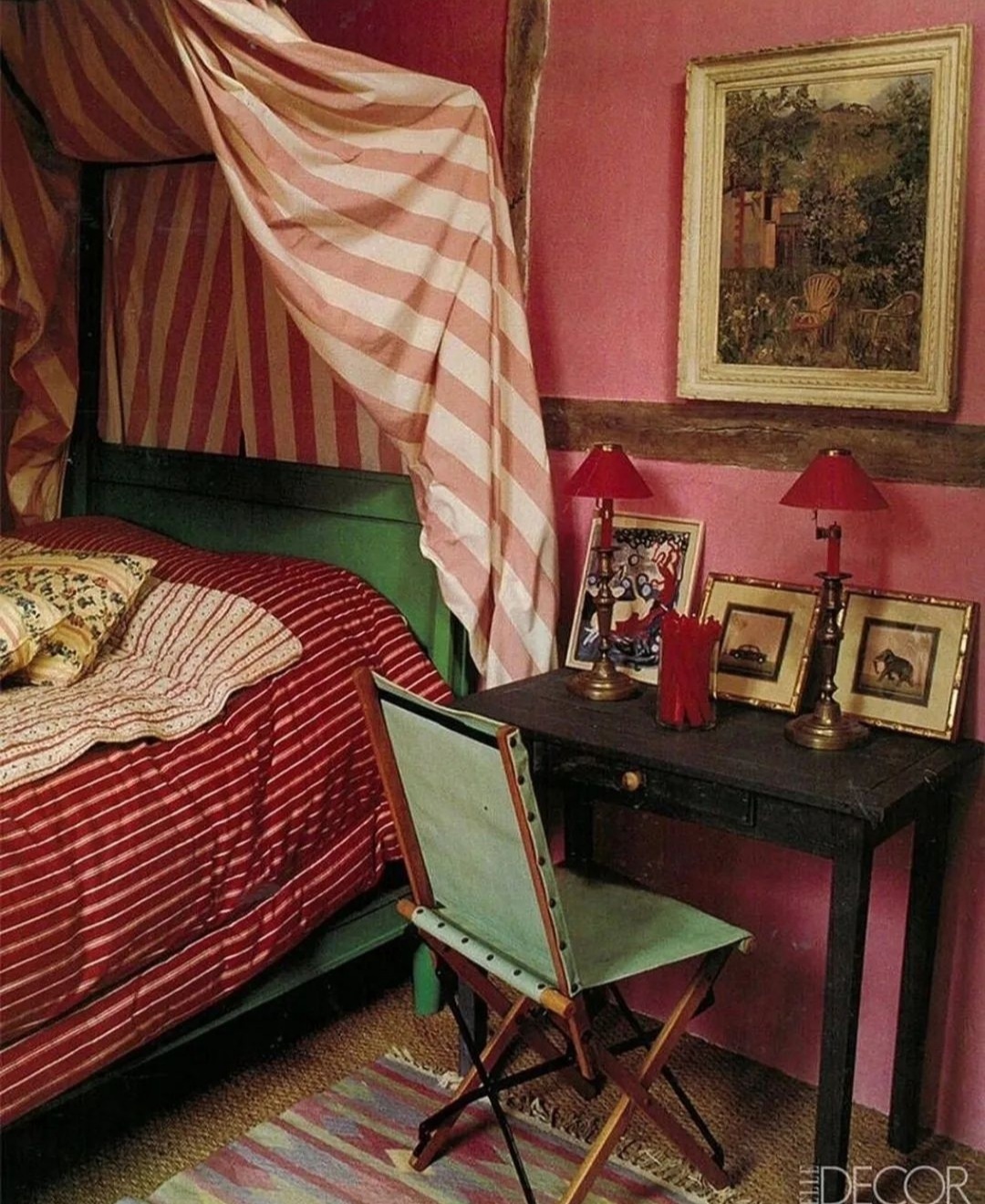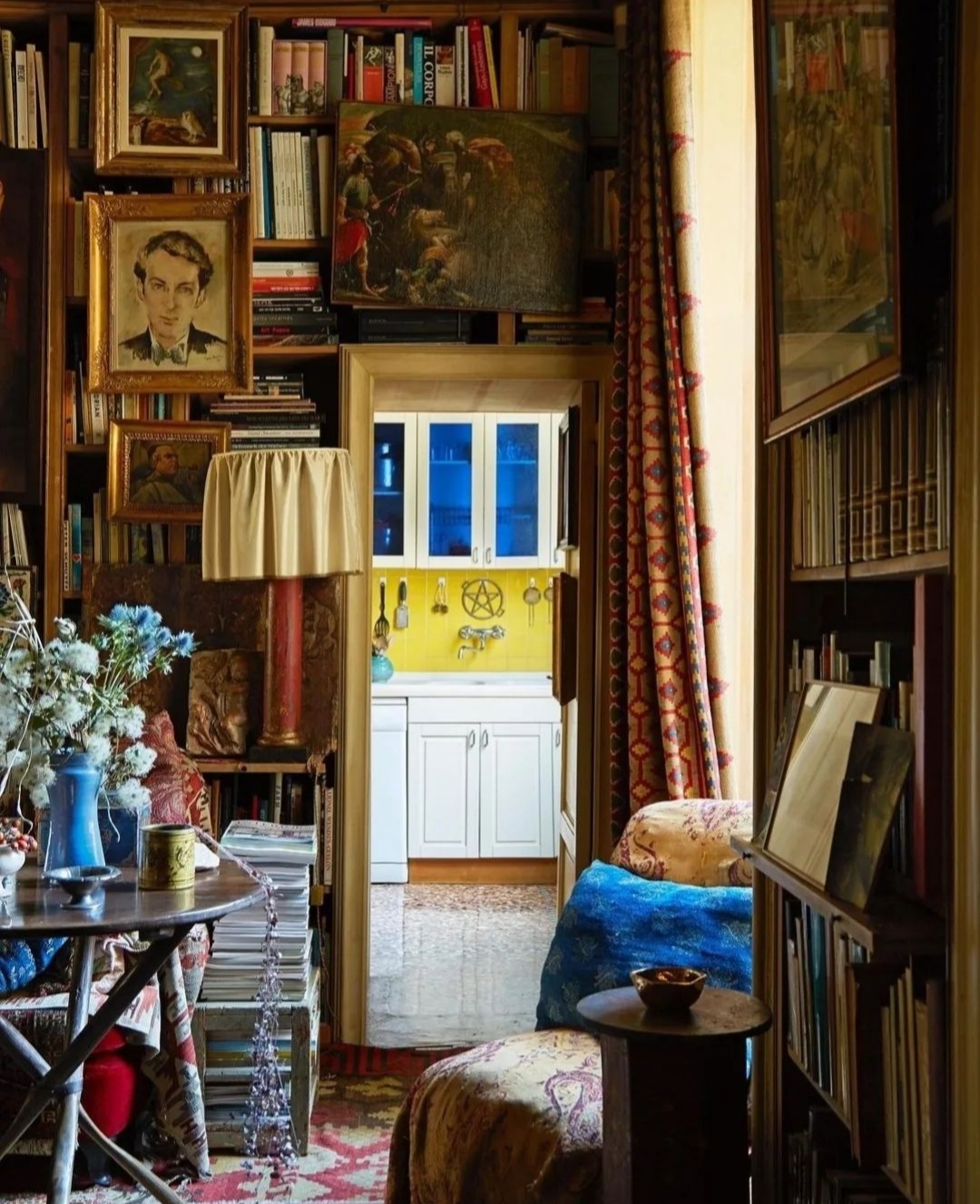THE ENCHANTED UNIVERSE OF MISS CLARA
French artist Claire Guiral, better known as Miss Clara, creates enchanted worlds from fine paper, recycled fabrics, and papier-mâché. Her endearing characters seem to have stepped out of a fairy tale, inviting us into a microcosm filled with magic, fantasy, and childhood nostalgia.
In addition to her charming sculptures, full of delicacy, Claire also overlays antique wallpaper and adds color in certain areas to decorate her home—a space that reflects the same visual richness and poetry characteristic of her work.
Her home is the exact extension of her creations: the decor mirrors the universe of her small paper creations, with the same style, atmosphere, and visual care—only the scale changes.
I’ve always been fascinated by the way she builds her own universe: discovering it feels like entering her most intimate home and being invited to the best fantasy show. With this curiosity, I approached Claire to learn more about what lies behind her creative process.
What is your main inspiration for creating these micro-worlds?
My main sources of inspiration are antique objects and furniture (I love flea markets), fairy tales, and 18th-century painting. I’ve always enjoyed crafting and creating; I have two younger sisters, and I loved reading them fairy tales and making objects for our dolls.
Your childhood seems to play a significant role in your work. As a child, did you imagine you would end up dedicating yourself to art? Tell me about your first steps in this world.
Yes, my work is closely linked to my childhood: memories of my grandparents’ old houses, mysterious attics, gardens with animals—rabbits, chickens… I was very reserved, and they were my confidants. My family and my parents’ friends repeatedly said I would become an artist. That scared me a bit! Because in my mind, I had those stories of Impressionist painters so poor they gave up food or heating to buy paints!
I tried to escape their prediction: I was a graphic designer for about ten years, then I quit to dedicate myself to art. I live modestly financially, but I’m very happy with this total freedom of an artist’s life. I could no longer bear the demands of the advertising world; it was too far from my personal convictions, I absolutely needed to feel aligned with myself. That’s why I decided to take the risk of no longer working for others.
Where do these endearing characters you create come from? Are they memories from your childhood, figures that inhabited your imagination, or are they inspired by stories you’ve discovered later?
I love listening to novels, poetry, fairy tales, and my way of working allows me to do so, which continues to feed my imagination. I like old things; they have a charm and a patina that new materials don’t have. I recover old fabrics, antique papers, to transform them and give my creations that old-fashioned air I love so much.
It’s true that sometimes a small piece of fabric found at an antique fair can inspire a character, an old cardboard box can make me want to turn it into a set for a scene.
Your sculptures seem to be straight out of a fairy tale. How would you define the magical atmosphere that surrounds your work? Are you inspired by any particular era or style?
I love the magic of fairy tales: Perrault, Madame d’Aulnoy, the Brothers Grimm, and so many others. But also English illustrators and authors: Rackham, Dulac, Beatrix Potter, Kenneth Grahame. I also remember the cartoons of my childhood. At that time, there were beautiful animations from Eastern countries. Very poetic, made with simple techniques that gave them a lot of charm and a somewhat unstable and imperfect side that I was very attracted to.
What do you feel most connected to when creating?
When I create, I feel totally connected to the deepest part of myself. My inner child, and when people see my work, I think they feel the same: a connection to childhood, to a time when one could believe in fairies, in magic, in miracles…
Is there any project in particular that you remember fondly or that has been especially significant for you?
I have a very distant memory that may be the origin of all my creations: I was about seven years old; my parents didn’t want me to have cats. So I collected chestnut acorns, a beautiful velvety gray, and placed them in a small paper basket I made. I would caress them, and at night I would pray for them to come to life and transform into tiny gray kittens, so small that my parents wouldn’t even notice their existence.
Do you have any upcoming project that excites you for the future?
My only project is to continue living from my creations in the heart of this beautiful region where I live: Dordogne.
How do you envision the future of craftsmanship in an increasingly digitalized world?
The world is undoubtedly becoming more digitalized, but real life needs real objects, real materials, real houses with real decorations. Perhaps artificial intelligence will help us imagine them, but at some point, what is on the screen will have to transform into something tangible: a cushion, a painting, a paper diorama… I believe artists and artisans will always have a role in beautifying our lives.
If you had to define yourself with hashtags or tags, which ones would you choose?
Poeticworld – Dreamart – Paperart – Frenchshabby – Fairyart
Closing
The conversation with Miss Clara is like entering one of her fairy tale sets: full of subtlety, magic, and unexpected details. Her work reminds us of the importance of imagination, of caring for the small, and of finding beauty in the everyday.
At the same time, it highlights the fundamental role of craftsmanship as a form of resistance against mass production: a unique language that conveys identity, sensitivity, and time, and that remains essential to connect art with life.
Her work reminds us of the importance of imagination, of caring for the small, and of finding beauty in the everyday.
This post is also available in: Spanish
